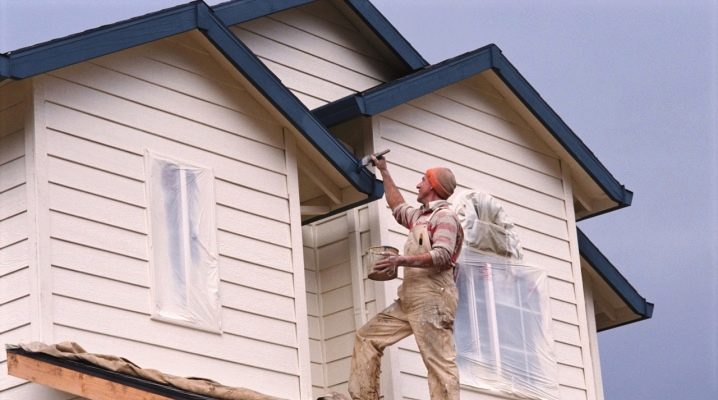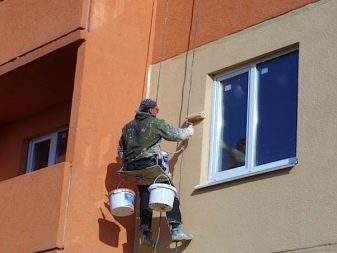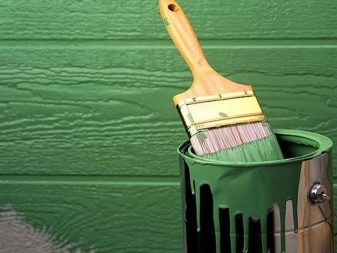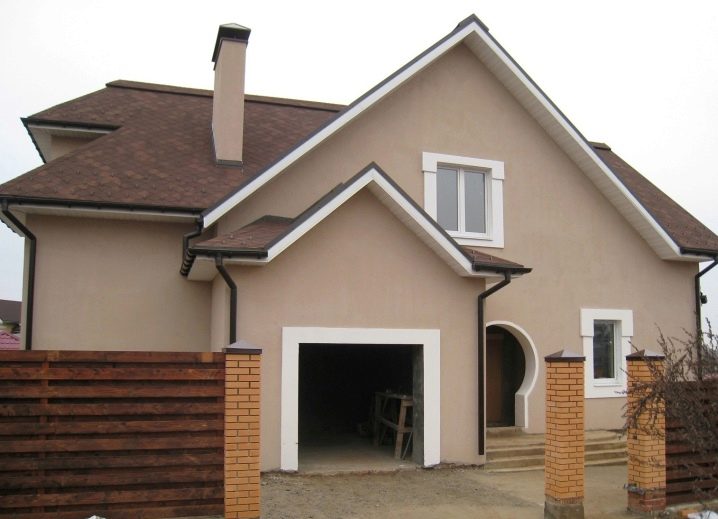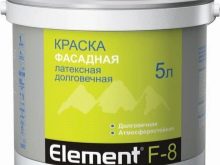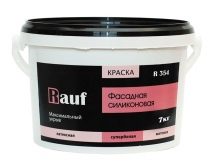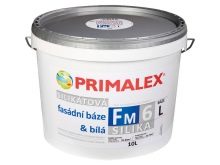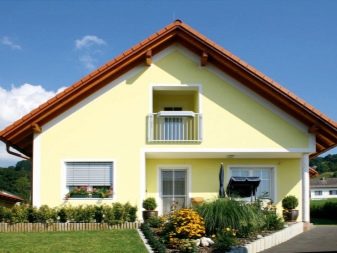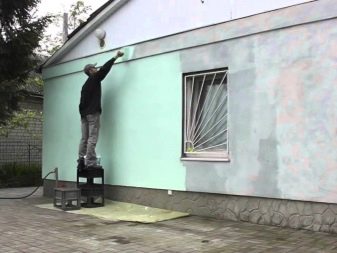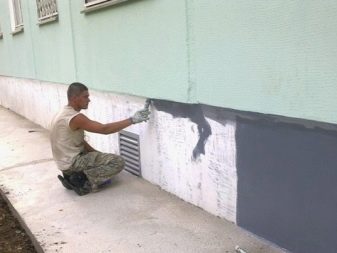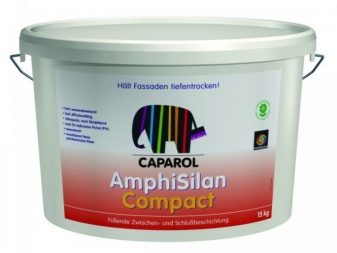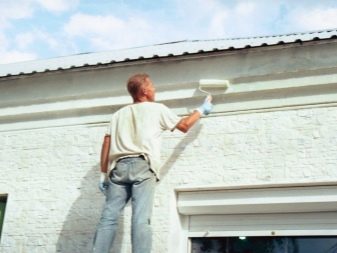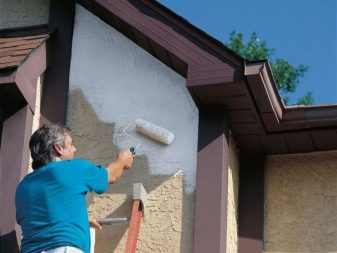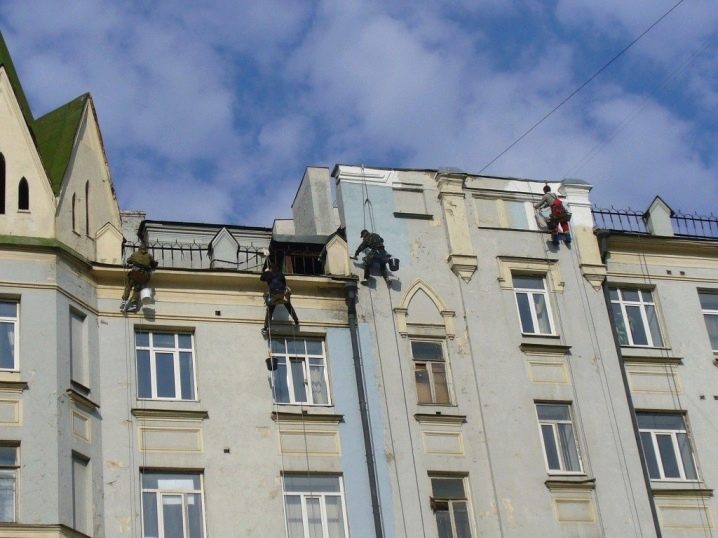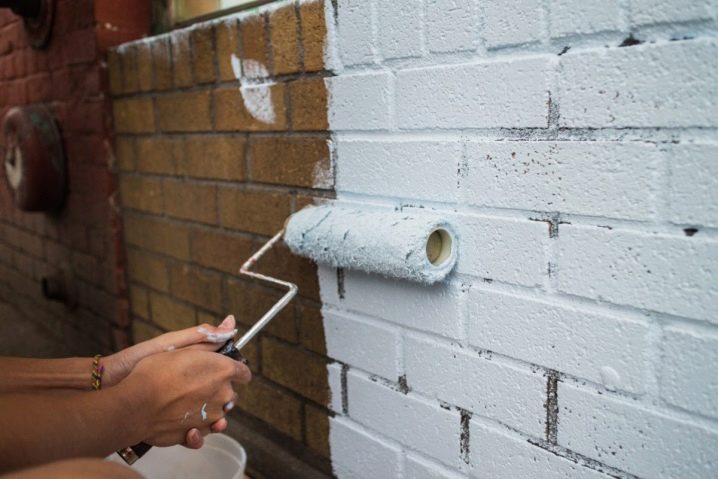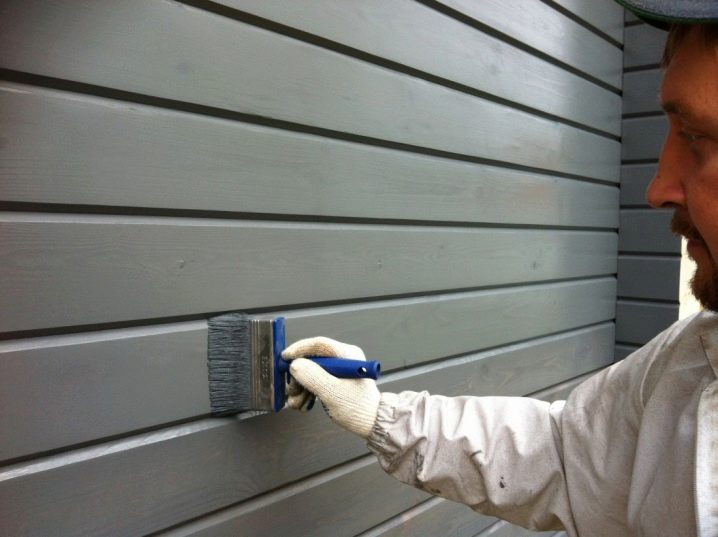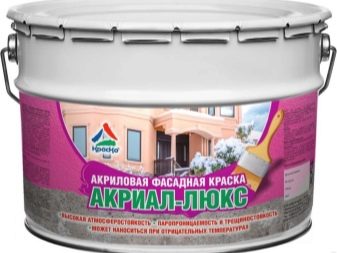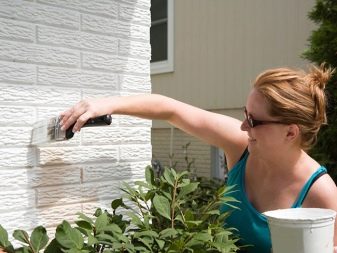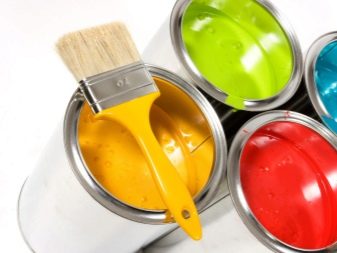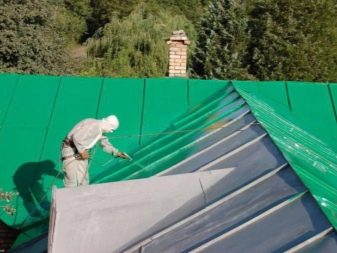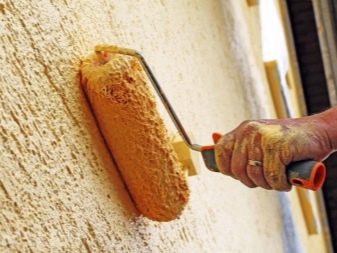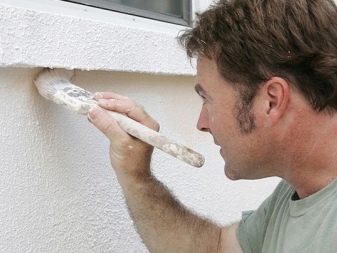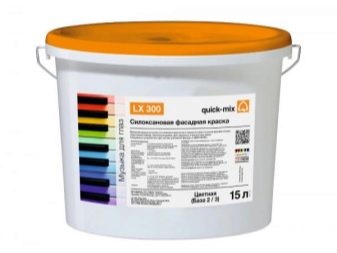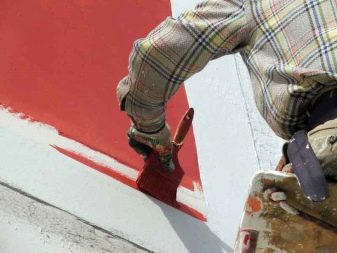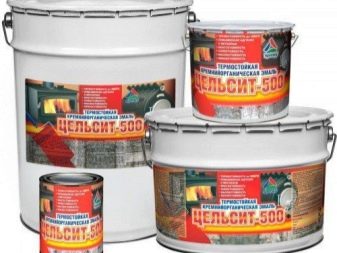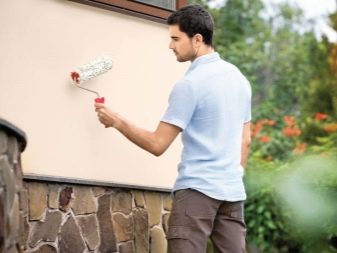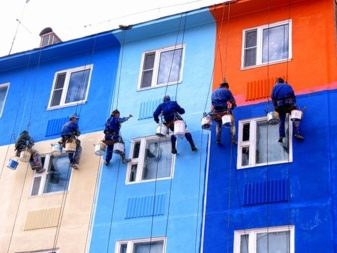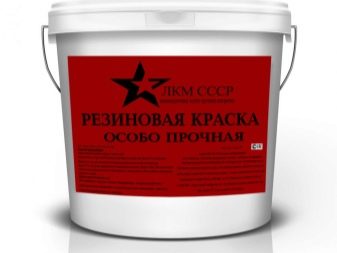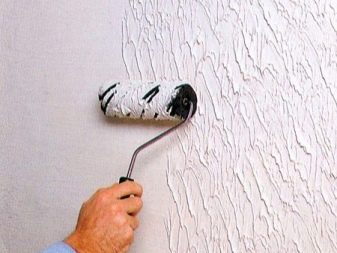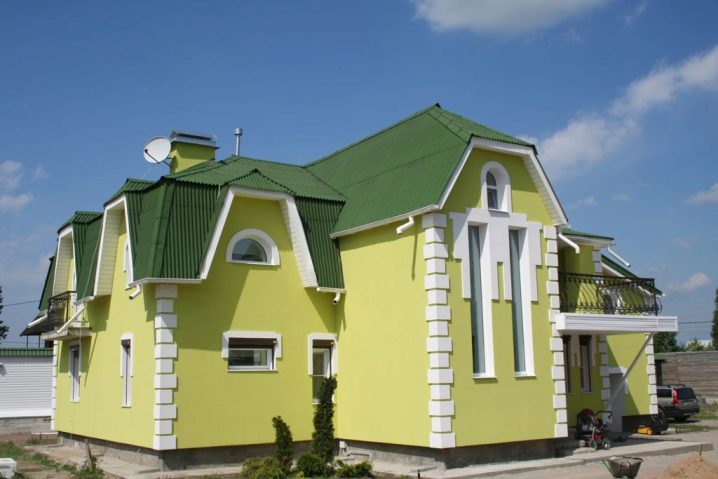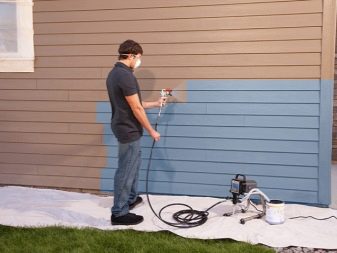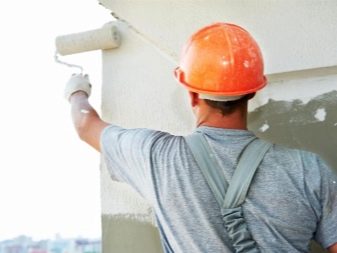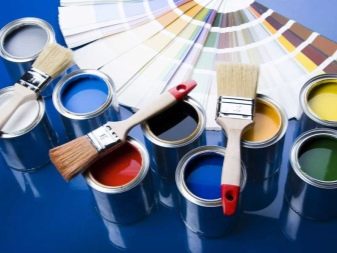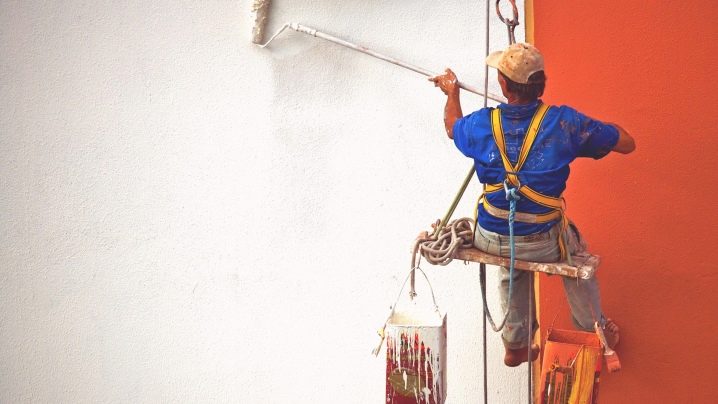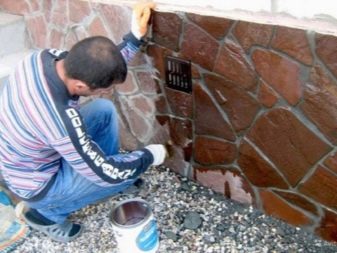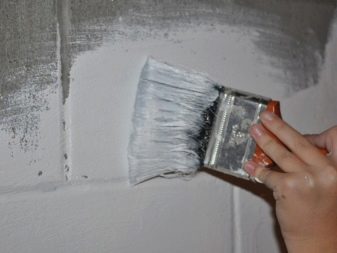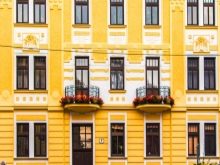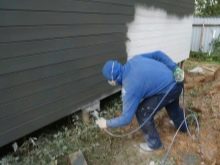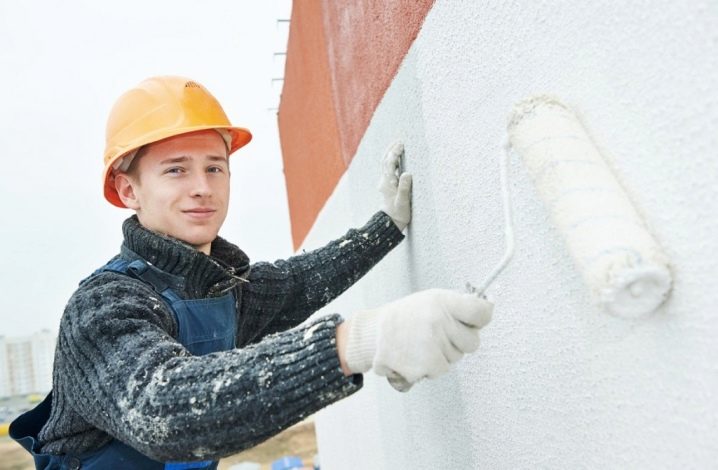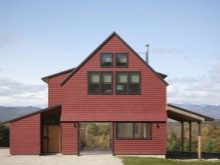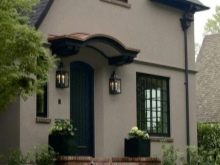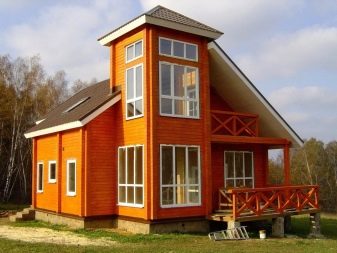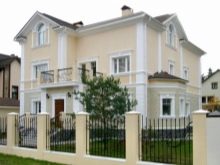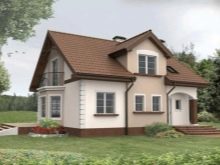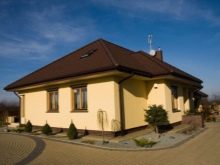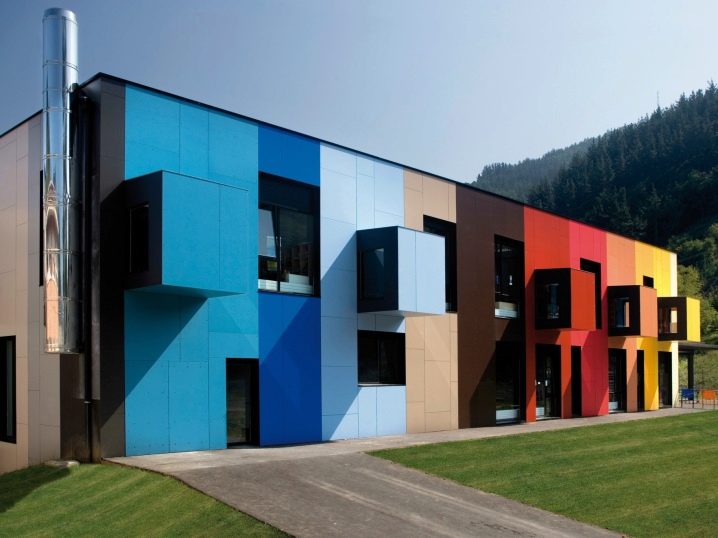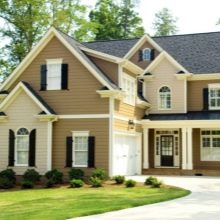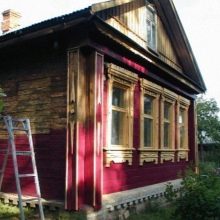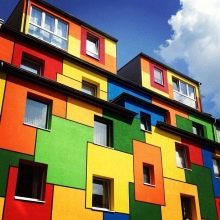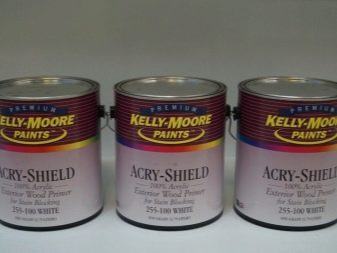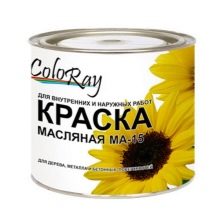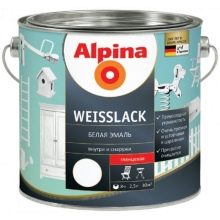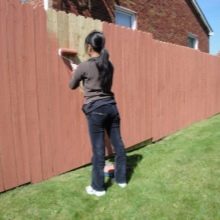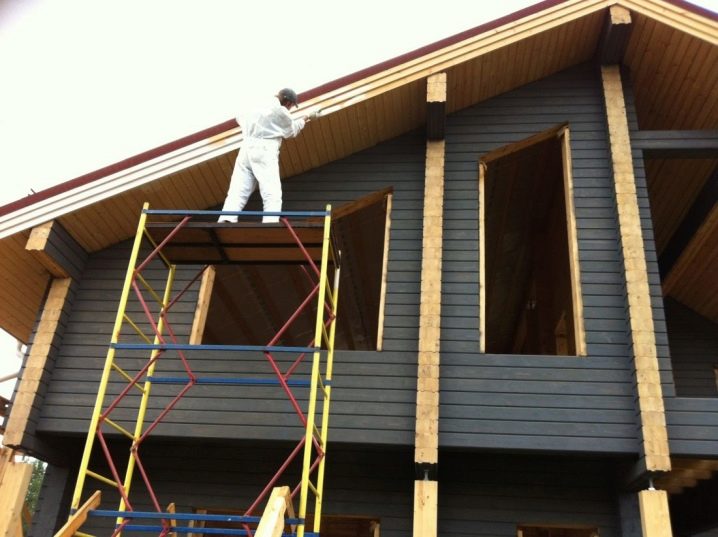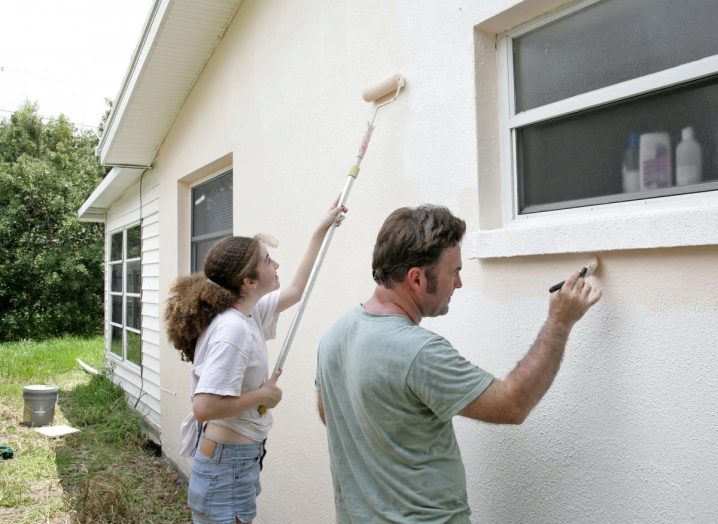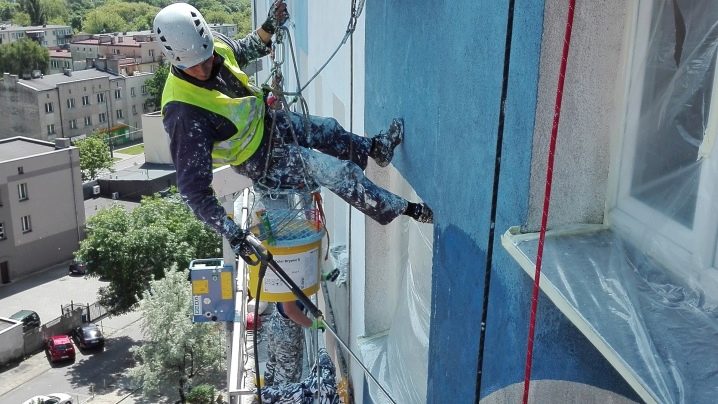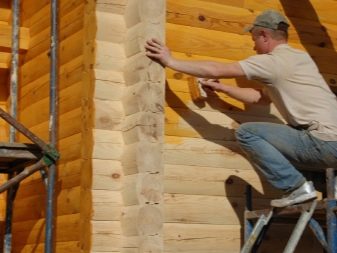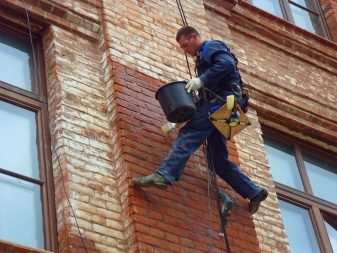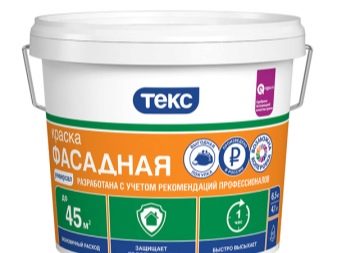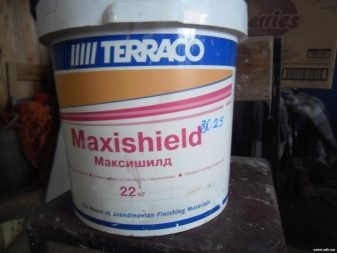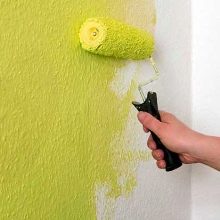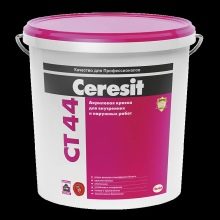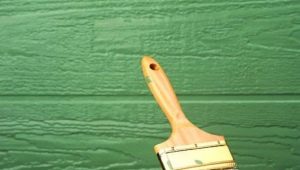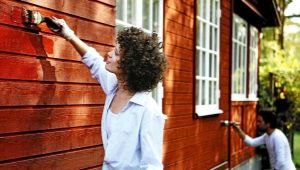Facade paint: types and their characteristics
The facade of the house is the same as a face for a person; it is not enough just to keep him in order, you also need to “give profit”. Many ways have been invented how to do this, a whole range of decorative solutions have been created. But among them a special place is occupied by the coloring of the facades. You need to do it by the rules and as carefully as possible.
Special features
Facade paint (also known as exterior paint) is distinguished both by its visual appeal and by its excellent level of durability and moisture resistance. An important indicator of quality is excellent adhesion, which plays a much more significant role than for interior paint. The remaining characteristics are selected individually, depending on which base will be at the bottom, and in what climatic zone the building is located.
If the facade is plastered, covered with putty or made of planks (logs), UV resistance is of great importance.
The composition applied to a brick, wood or plaster must be as strong as possible, since otherwise any contact will cause it to fall off and impair the integrity of the coating. Among the required technical characteristics by default is the ability to withstand strong shocks, vibration and friction. The certificate of conformity helps to find out how well this or that paint can withstand such dangerous effects.
If the seller refuses to provide it, it is better to refuse to purchase.
Kinds
A huge variety of brands and modifications of building paints should not be intimidating or misleading, in the end, almost all of the options are either water soluble or made using organic solvents. Besides them, several more mineral paints based on lime and cement have been created, they are environmentally friendly, but have a very narrow niche. Reflective properties allow you to highlight matte, gloss and semi-gloss paint. Water-soluble compounds are divided into:
- latex (the main component is acrylic resin);
- silicone (also with resins, but already silicone);
- silicate (base - "liquid glass").
Such decorative coatings can be used for applying on fences, benches, gates, fences. Adding an increased amount of resin ensures excellent resistance to water, and enhanced injection of pigment makes the color more vivid. Latex as well as acrylic blends make it easy to remove excess, last a long time and dry quickly. They can be applied even on a wet surface, but not on the oil paint. The smell is very weak, elasticity is quite decent.
Exterior emulsion paint has become the de facto standard and any of its composition must be resistant to sunlight and ultraviolet radiation. A very important property for compositions that paint the facade, is also weather resistance.
Additionally, it should be noted vapor permeability, significant adhesion, the minimum flow rate and high drying rate. It is almost always possible to find out the actual painting characteristics of the paint only empirically, assessing the uniformity of laying on the surface, the number of stains.
It is good to process with water-soluble paints:
- tree;
- brick;
- plaster;
- metal (only after applying the primer technology).
It is not necessary to dilute such coloring mixtures, if you work properly, a uniform thin layer is formed. It does not crack, and the dye does not fade even in the bright southern sun.
Oil and alkyd dyes dry extremely slowly (at least 12 hours, and some varieties up to 4 days even under ideal conditions). Their smell is very heavy and unpleasant, it is rather difficult to clean the painted surface. When the assortment of paint coatings mastered by industry was much less modern, there were no particular alternatives. But today, even high strength and excellent adhesion to whitewash do not justify the use of such materials.
Those who still want to use oil paint, need to know that it is not suitable for galvanized steel and fresh brickwork. The applied coating will have to be protected from water penetration until the final hardening. Under direct sunlight, the paint will burn out, and oxidation with atmospheric oxygen will, over time, cause it to crack.
Paint type "Acrylic" absorbs little water and almost never misses water vapor.The main advantage of this coating is high resistance to dirt. It can be applied to any kind of surface, with the exception of lime and silicate.
Perchlorvinyl paint is diluted with xylene and solvent, thanks to this property, it can be applied even with a frost of 20 degrees.
But if the temperature exceeds +30 degrees, this coloring composition cannot be used; Nevertheless, with known reservations, this composition can be called all-season.
Perchlorvinyl dye reacts with organic solvents such as xylene and solvent. Unlike water mixtures, it is effectively applied to the wall at a temperature of minus 20 degrees. But if the temperature exceeds +4 degrees, the paints dissolving in organic liquids will dry out too quickly and the facade will be stained.
Textured type of paint - one of the latest developments in this field. Its advantage is that the surface does not just change color, but also acquires a pattern of a chaotic look. A huge amount of textured dyes has already been created, the difference in their design properties is due to the type of filler.Such compositions are effectively used on a par with decorative plasters and can be applied to any facade of your choice.
Siloxane paint differs in simultaneous resistance to ultraviolet, water and temperature changes. Various finishing and construction materials, other types of paints and even ordinary plaster can serve as a basis.
Silicone dye mixtures contain a wide range of pigments and other components, which allows them to have very valuable practical qualities. There are two levels of thermal resistance silicone facade paints - some are able to survive the heating of more than 150 degrees, while others in such conditions will be irretrievably damaged.
Rubber paint is close to latex, also made on the basis of artificial rubber. Thanks to him, after drying the paint layer:
- elastic;
- keeps well on the surface;
- crack little;
- permeable to vapor.
It is necessary to say about one more product. - structural paint. These can be very different in chemical composition coloring mixtures, united by one property: the formation of an attractive surface structure,reliably covering minor base defects. The outer layer is reliable and mechanically strong, very little wear.
Surface types
Paint for exterior work can only be applied to strictly specified types of surfaces and it is desirable to use the same paint that was used last time. It so happens that it is difficult to understand what composition was used previously, then it is advisable to use alkyd dyes.
Better yet, completely remove the old paint layer, sand the surface and prime it again.
Removing the old surface is strictly necessary if it is peeling off and contains persistent soiling. Often the surface layer on the facade of the house has to be strengthened, to remove the cracks and to cover it with plaster. If you paint the house on the first or second floor, be sure to use a ladder and ladder. It is not enough just to clean the surface, you need to rid it of bumps, from shedding, it should be smooth and completely dry by the time of painting.
Greater complexity is the combined surface, the finishing of which used a variety of materials.Sometimes only trained specialists can pick up a solution (choose the dye correctly), it is impossible to do it yourself. In such situations, the personal presence of an expert at the facility is required, telephone consultation will not help.
Paint on metal must be not only durable, but also resistant to strong heat, sometimes it is necessary to evaluate the resistance to fire.
Oil dyes are easily destroyed by the action of moisture, for this reason it is undesirable to use them to finish the metal surface. Alkyd paints are more practical, but it is necessary to take into account their increased toxicity and observe safety rules. The choice of paint should correspond to the architectural features of the building, the classic setting is not compatible with any design experiments.
The mineral composition fits well on concrete and brick, and if you want to make old facades more alive and stronger, it is advisable to use silicone dyes. On top of reinforced concrete or decorative plaster is best to apply acrylic paint. Wood and metal are recommended to be covered with universal coloring compositions based on various resins.Silicone blends are preferable for walls that are close to the roadway, since they are not covered by dirt.
If a wild stone or decorative plaster is used in the construction of the house, their texture should be emphasized by the selected coloring composition. If the outer surface of the house is smooth, you need to choose textured paint, which allows you to create expressive contrasts.
It is undesirable to conduct very active experiments with the painting of single sections of the wall. Slopes and foundations, shutters, stucco elements, pilasters, arches and the main entrance can be distinguished. According to the designers, it is undesirable to introduce more than three colors on one plane.
Colors
The white railings and the similar tone of the window frames fully correspond to the white or cream finish of the facade. But in order to choose a high-quality paint color, you need to take into account many other circumstances:
- geographical region;
- climatic conditions;
- practical functions of the house and its parts;
- the amount of construction and surrounding buildings;
- types of structural elements;
- lining type;
- color features of the surrounding space.
Additionally take into account the light (natural and artificial), the difference in the perception of color at different times of the day. Metal parts should be covered with steel and black paint. Light tones are in most cases more practical and sleeker than very bright ones (they create a positive look and at the same time comparatively do not get dirty). If it is difficult to choose the optimal combination of different colors, you need to focus on the shades produced from the same color.
Thinking through a combination of colors, you need to take into account the positive aspects and mask the disadvantages of the surface with its help.
Designers recommend using brown, red or yellow paint.
A good result is provided by white and gray dyes. It is undesirable to introduce too many dark tones, otherwise there will be a feeling of gloom and even underlined bad taste. The green facade blends well with natural landscapes, with parks, gardens and vegetable gardens. More modern substitutes for it, appropriate in modernist compositions, are purple and black.
At the peak of fashion now is terracotta tonality, which is easy to use as a replacement for any autumn motifs:
- carrot;
- bright orange;
- brick.
With the help of such paints it is possible to create a relaxed, calm atmosphere, and you can even vary the thick and weakened tones. The brown facade, contrary to popular opinion, is not necessarily monotonous and boring, because this paint can be very specific - copper, chocolate, a number of other keys, separating these two variations. Brown should be done only surfaces that are not decorated with complex architectural compositions. Otherwise, they will not be perceived as well.
It is necessary to take into account not only the recommendations of designers, it is required to pay attention to how exactly the color will affect the psyche. Some people like red, others like cream, and others like it.
It is also necessary to pay attention to your own preferences, since not the builders and designers will use the house, but the owners. As for the choice of gamma (monochromatic, achromatic, contrast), here we should focus on the recommendations of specialists, since this is not an easy decision.
Note: a house painted in two or three colors looks much prettier than a single color. Dark shades in the northern regions can be used more actively than in the middle lane and in the southern regions. Saturated coloring and small design elements mutually contradict, it is necessary to choose either one or the other.
How to calculate the flow?
If the type of paint and its color are finally selected, it is necessary to calculate the consumption of the coloring composition. This is important when working independently (to know how much paint you have to buy) and when ordering the services of painters (to control their actions and not overpay unnecessarily).
- The standard cost of water-based paint is 0.3 kg per 1 sq. Km. m And this means that for every 10 square meters. m will have to buy at least 3 kg of the dye composition, it is better to buy it with a margin. After all, the real consumption will almost inevitably be higher than the calculated figures. The surfaces of the walls of houses (unlike those used in the calculations of manufacturers) are inevitably uneven to one degree or another, heterogeneous.
- Acrylic paint consumes less than water-based (in most cases 0.15-0.2 kg per 1 sq. m.). By increasing or decreasing the brightness of the tone, you can vary the flow. We'll have to accept, however, with the inability to determine the real paint consumption before the start of work.Only in the course of their it becomes clear how much dye will actually be used. Obtaining with the help of one or two layers the required shade, spend 130-170 g per 1 m2; if you have to add more paint, you can focus on the figure of 0.2 kg.
- Oil paints, if they are thick, must be pre-diluted. As in the case of acrylic compositions, when calculating the need to pay attention to the necessary color saturation. So, when applying a small amount of green dye, you get a salad or light green wall. If the underlying layer is plastered, then the minimum consumption of oil paints starts from 0.15 kg per 1 sq. Km. m
- Alkyd dyes are consumed in various ways, depending on whether they are diluted with turpentine, linseed oil, or kerosene. In most cases, painting the facade requires spending about 1 kg of alkyd paints on 10 square meters. Even if previously it was necessary to use the same type of paints for interior decoration, this experience and calculation for decorating the facade cannot be extended.
It should be noted that paint consumption is reduced, if it is very high quality and thorough to prepare the wall for finishing. The time spent on closing the cracks and pits on the surface, waiting for the surface to dry out is the best way to reduce the consumption of the coloring composition. If the wall is covered with rust, microscopic fungi, it significantly increases the cost of repairs.
Tips and tricks
You need to know the following:
- According to the professionals, it is necessary to paint the facade taking into account whether it is located on the sunny or on the shady side of the site. In these two cases, completely different tones are preferable and the same color is categorically unacceptable. You can also pay attention to the color matching of the walls of the roof. If the upper part of the building will soon be updated, it is more correct to select its color simultaneously with the selection of the tone for the walls.
- So that you do not have to wash it off, scrub the applied layer of paint once more, again and again spend time and money on experiments, it is better to conduct experiments with photographs (paper, even better - electronic). Even for smartphones there are a lot of applications that allow you to find out exactly how this or that color will look in reality.
Cleaning silicate paint is much easier than other formulations.The first rain will independently wash away the pollution, largely freeing people from this task.
- When selecting paint for exterior walls you need to take into account those moments that are not significant indoors. So, thermoplastic dyes soften under the action of sunlight. And if you apply a dispersion paint, you can face the emergence of thickets of moss on the surface of the wall. Silicate coatings become softer when heated, begin to stick: as a result - the facade of the house is covered with dust, which is difficult to remove.
- If one of the parties at home could not be immediately brought to perfection, you can not hurry and take up the next one. Adjusting a small area is easier and easier than repainting the entire structure. It is unacceptable to paint in rainy or frosty weather. It is best to wait for some time after any rain falls and paint the already dried wall. If it has previously been found that the acidity of the wall is increased and this will further lead to accelerated deterioration of paint, it is necessary to thoroughly saturate and strengthen the base.
High-quality preparation for painting also includes:
- elimination of all greasy, shiny stains and rust stains;
- removal of any screws and nails;
- plastering.
To eliminate dirty stains, use a trowel and a metal brush. An alternative option is blowing walls with compressed air. To increase grip, you need to rub the surface with emery paper. Smooth facades are coated with primers with the addition of a fine fraction of quartz sand. Check the integrity of the facades is carried out with wooden hammers, the slightest swelling or cracks should be immediately repaired, it increases the resistance of the coating.
A common mistake is to ignore proprietary ink instructions. Very many people have lost a lot of time and energy in vain due to distrust of the manufacturer's information. It is extremely important to consider whether it is permissible to dilute the paint, in exactly what proportion, on what basis to apply the composition.
If you have to perform painting at height, you need to very carefully prepare the tools (stairs, ladders) and check them before lifting. It is desirable to attract an assistant, he will not only speed up the work (by applying paint and a brush, taking them back), but also ensure safety, help in the event of some kind of incident.
Manufacturers
There are many companies that supply paints for finishing the facades of houses. But not all of them are able to solve the task really well and durable.
- Firm "Tex" offers its product at an optimal price that fully corresponds to its quality. The entire line of this manufacturer serves at least 7 years, thanks to an exceptionally strong polymer film with high vapor permeability. The company sells acrylic and siloxane, silicate and silicone paints and varnishes; There are universal formulations and mixtures for painting facades operated in extreme conditions.
- Among the best paints can be called and products under the brand Terraco. This manufacturer produces matte water-based dyes for interior work, silicone and acrylic for outdoor. Vinyl universal paint "Terralux" with a matte effect is suitable for almost all surfaces inside and outside the house.
- Products Caparol produced over hundreds of years, with the company consistently follows the latest technical innovations. Each option fully complies with the requirements of the “Blue Angel” sign, denoting a very high level of environmental properties.
- Brand products Ceresit very resistant to acids and alkalis, to mechanical abrasion. Other performance and color options are also very high. The coating comes in cans with a capacity of 15 liters each, that is, most walls can be painted with the contents of one can.
- Mark "Dali" - it is a frost-resistant paint capable of creating a high-quality coating at temperatures down to –20 degrees. Its durability is large enough, even in contact with water. At temperatures from –50 to + 50 degrees, the warranty period is at least 10 years.
A lot of important recommendations on the choice of facade paint you can find out further.
